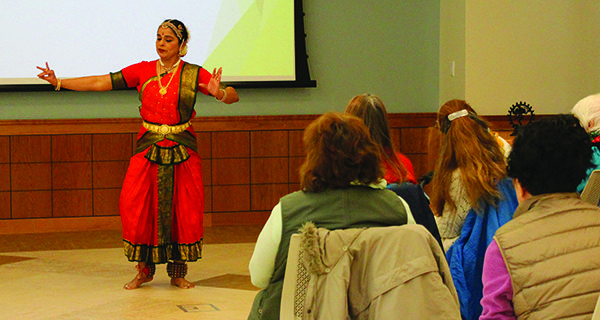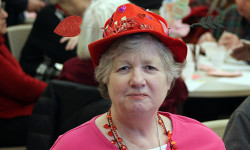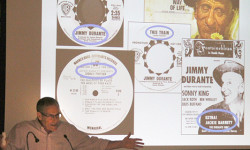[ccfic caption-text format="plaintext"]
By Laura Drinan
Hometown Weekly Reporter
On February 2, the Wellesley Council on Aging welcomed Jeyanthi Ghatraju to the Tolles Parsons Center to educate the seniors on classical Indian dance and give a demonstration.
Jeyanthi has made it her mission to perform for charity and the underprivileged. She practices Bharatanatyam, a genre of classical dance, around the United States and Canada, and she offers certificate and degree programs through the Alagappa Performing Arts Academy in India.
In 2013, Jeyanthi was awarded the U.S. Presidential Gold Service Award for her community service and was named woman of the year in 2014 by India New England News Magazine.
Dressed in a bright red-orange sari, Jeyanthi stood in the front of the multi-purpose room with thick anklets that jingled as she walked. Flowers and beads decorated her hair, and a gold belt and jewelry perfectly accented her sari as she began her presentation.
“Bharatanatyam uses the whole body as an instrument of communication,” she said. “It’s very intricate because there are single hand and double hand movements; there’s foot and there’s eye [movements] and there’s a lot of these expressions put together.”
She demonstrated such movements with a dance called “Pushpanjali,” which is an offering of the flowers of obeisance to the Lord Supreme, Jeyanthi’s teachers, and to the audience. As cymbal and drum filled music played, Jeyanthi’s motions symbolized the nine basic emotions, including love, anger, fear, bravery, disgust, humor, compassion, wonder, and peace.
“It’s very simple, but it’s very stylized,” she said. “The purpose [of Bharatanatyam] was to create beauty, give pleasure, and to communicate, and most importantly as an expression of worship.”
Jeyanthi also performed a dance that highlighted multiple tempos in one song during “Alarippu,” a dance to represent the opening of one’s body and mind.
Over time, Bharatanatyam has evolved to become an even greater art form through interactive and expressive dances called “padhams.” Jeyanthi showed the audience two expressive pieces: one to show the interactions between a mother and a baby, and a contemporary piece to symbolize natural disasters in California.
As she caught her breath between each dance, Jeyanthi explained the origins and meaning of each piece.
With “Thillana” and “Mangalam” symbolizing pure joy and peace and love from our surroundings, respectively, Jeyanthi spread positivity and an appreciation for Bharatanatyam.






















